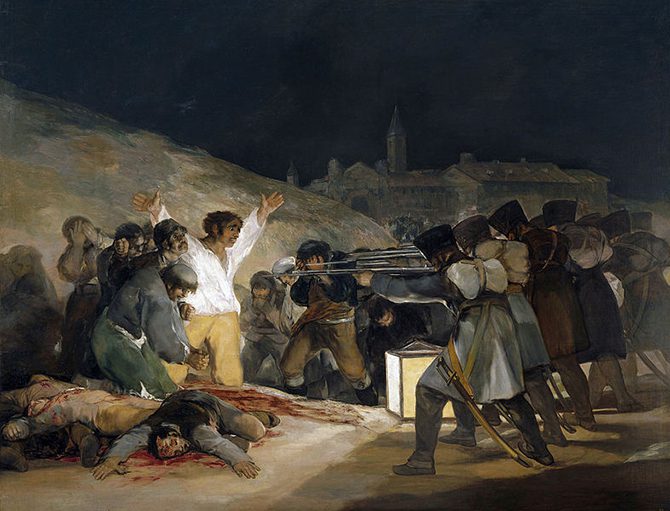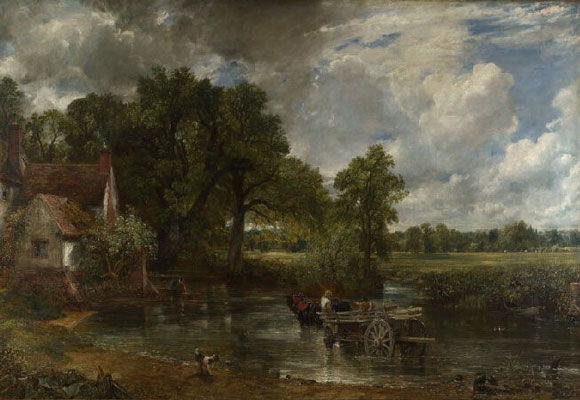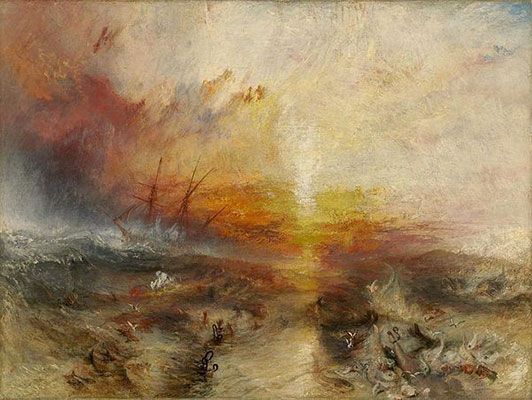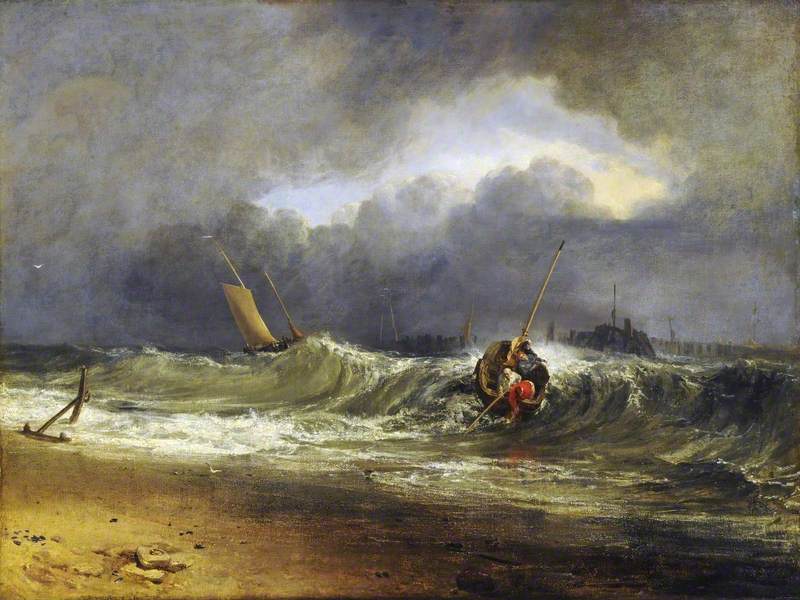Artists have been painting the landscape since ancient times. The Greeks and Romans created wall paintings of landscapes and gardenscapes. After the fall of the Roman Empire, the tradition of depicting pure landscapes declined, and the landscape was seen only as a setting for religious and figural scenes. This tradition continued until the 16th century when artists began to view the landscape as a subject in its own right. The artistic shift seems to have corresponded to a growing interest in the natural world sparked by the Renaissance.
The term “landscape” actually derives from the Dutch word landschap, which originally meant “region, tract of land” but acquired the artistic connotation, “a picture depicting scenery on land” in the early 1500s (American Heritage Dictionary, 2000). A landscape is the visible features of an area of land, its landforms, and how they integrate with natural or human-made features, often considered in terms of their aesthetic appeal. The development of the term in the Netherlands at this time was logical because the Netherlands was one of the first places that landscape had become a popular subject for painting. At this time, the rising Protestant middle class sought secular art for their homes, creating the need for new subjects to meet their tastes; landscapes helped fill this need.
Birth of the Classical Landscape

Landscape with a Calm, Nicolas Poussin, 1650–1651
In the 17th century the classical landscape was born.
VS
The Modern Landscape

Irises, Vincent van Gogh, 1889
The 19th century held many milestones for the history of landscape art. As the Industrial Revolution altered the traditions of rural life, the old hierarchy of subjects crumbled.
Comparison
Within these two famous paintings, you can instantly tell they are significantly different and have impactful contrasting qualities to one another but also similar. One similar quality they both have is they are both inspired by beautiful things. However the classic landscape contains man-made and is influenced by by classical antiquity and contains a ” rich” part of the land. Arcadia, a legendary place in ancient Greece known for its quiet pastoral beauty. In a classical landscape the positioning of objects was contrived; every tree, rock, or animal was carefully placed to present a harmonious, balanced, and timeless mood. This painting is also painted to look realistic and natural. Whereas, the modern landscape is not-man made and is natural in a different sense however is purposefully painted to look fake as if it has been painted. This creates a large contrast between the two. The modern landscape also only contains one natural object rather than multiple therefore you are only looking at one thing as there is no more eye catching objects.
Photography and the 20th-Century Landscape
In the early 20th century, painters continued to embrace the landscape. As photography gained acceptance as an art form, artists used the medium to create interpretations of the land through pictorialist effects and, later, through formal compositions of close-up, cropped views of the landscape. In America, photographer Ansel Adams captured the country’s attention with his breathtaking views of the wild beauty of the American West. Even though the major artistic movements of the mid-20th century were no longer dominated by the landscape as a subject, the genre’s importance continued as artists responded to fears of increased industrialization, the threat of global destruction, and ecological disasters.
In the second half of the 20th century, the definition of landscape was challenged and pressed to include concepts like urban landscapes, cultural landscapes, industrial landscapes, and landscape architecture. Landscape photography continued to evolve and rise in popularity. American photographers like Robert Adams and William A. Garnett used the medium to raise awareness of conservation concerns. Today, the landscape continues to be a subject artists turn to when contemplating the ways we relate to the places where we live and the impact we as humans have on the land.
SUBLIME IN ART
What is Sublime?
Sublime is the quality of greatness beyond all measure. The Sublime is a western aesthetic concept of ‘the exalted’ of ‘beauty that is grand and dangerous’. The Sublime refers to the wild, unbounded grandeur of nature. Sometimes, we photograph things that are awe-inspiring and not necessarily beautiful.
The sublime is both beautiful and terrifying in its power or potential darkness. Artists explored the sublime in depth through art using paintings and drawings of the imagination, however they could often turn into nightmares. Natural landscapes were mighty and nice to look at and people admired the aesthetics but they were always dangerous.
Ansel Adams’ photographs of towering mountains and canyons are arguably major expressions, exemplars and evokers of the sublime in photography. The sublime involves the formlessness of uplifting spectacles and produces feelings of awe and terror.
Humans subconsciously connect to nature as we admire it as we live in it however this contrasts as we also mistakenly destroy it e.g. by polluting the air, cutting down trees and leaving litter around. Us as humans are not grateful enough for the nature that we are given although we admire it. This is a large contrast within how we feel vs what we do which creates a significant debate.

Within this image, there is a disaster however it is sublime. The natural and non-man made objects are beautiful but the concept within its self is not but it is however grand. The clouds and other images are beautiful no matter the context. This makes it sublime
FAMOUS IMAGES
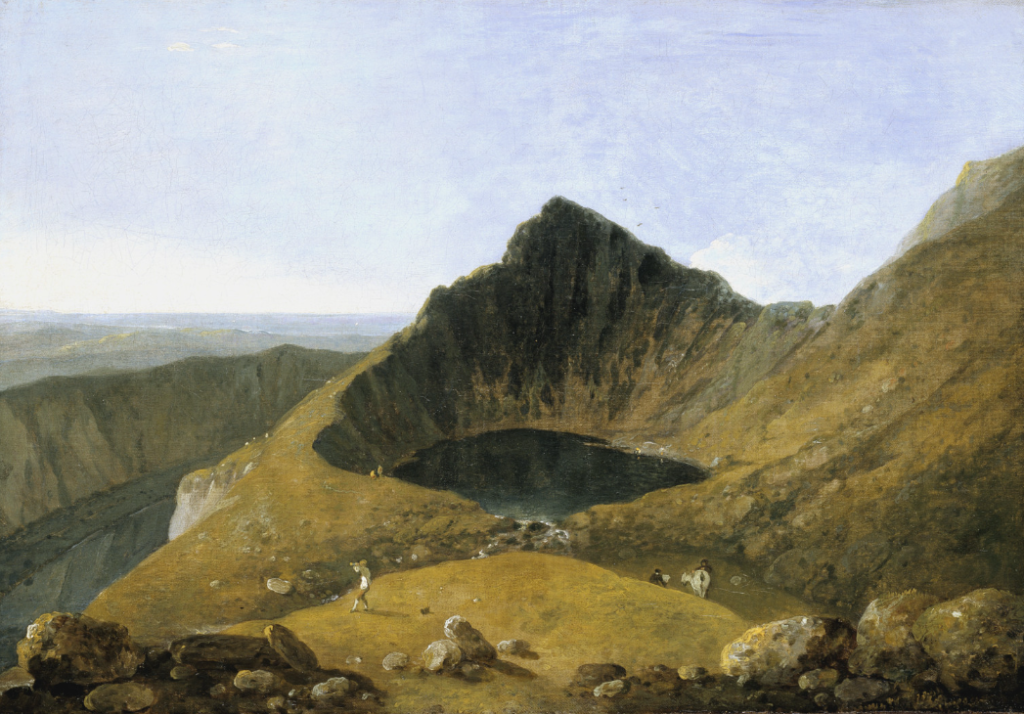
Richard Wilson 1713–1782
ROMANTISM
The Age of Romanticism (1800-1900ish)
Romanticism emphasized the individual, the subjective, the irrational, the imaginative, the personal, the spontaneous, the emotional, the visionary, and the transcendental. Travel to the turn of the 19th century to experience the Romantic musical, literary, and artistic movement.
Romanticism is an artistic and intellectual movement that originated in Europe towards the end of the 18th century. For most of the Western world, it was at its peak from approximately 1800 to 1850.
How did romanticism change art?
Along with plumbing emotional and behavioural extremes, Romantic artists expanded the repertoire of subject matter, rejecting the didacticism of Neoclassical history painting in favour of imaginary and exotic subjects. Orientalism and the worlds of literature stimulated new dialogues with the past as well as the present.
Today, Romanticism can be found in a wide cross-section of film, television, literature, music, and art. Whether it is a focus on the eternal power of nature or an audience’s visceral reaction to a particular medium, contemporary society is ripe with Romance in the Romantic sense.
Romantic artists often sought to capture the moods, feelings, and emotions of their subjects, using expressive compositions, vivid colors, and dramatic contrasts of light and dark. Nature was another important theme in Romantic art, with many artists exploring the beauty and power of the natural world.
There are strong echoes of Romanticism in contemporary concerns about the environment and the need to appreciate and preserve it. Romantics also embraced the foreign and the exotic, especially eliciting an interest in Orientalism, and this too affected the history of art.
The Industrial Revolution 1760-1840 was based upon the efficient exploitation of nature’s raw materials and labour as new scientific theories developed by the Enlightenment thinkers were quickly transformed into practical, money-making applications.

MOODBOARD
